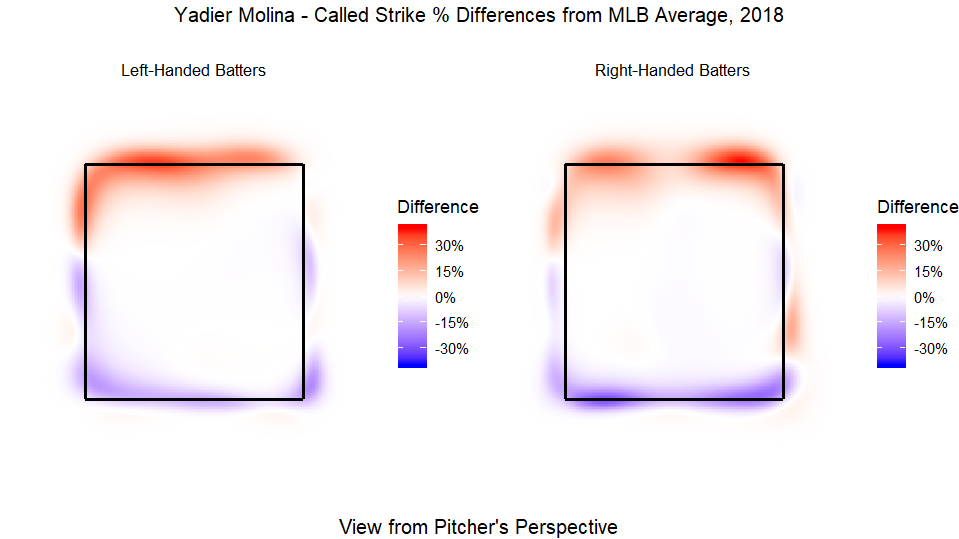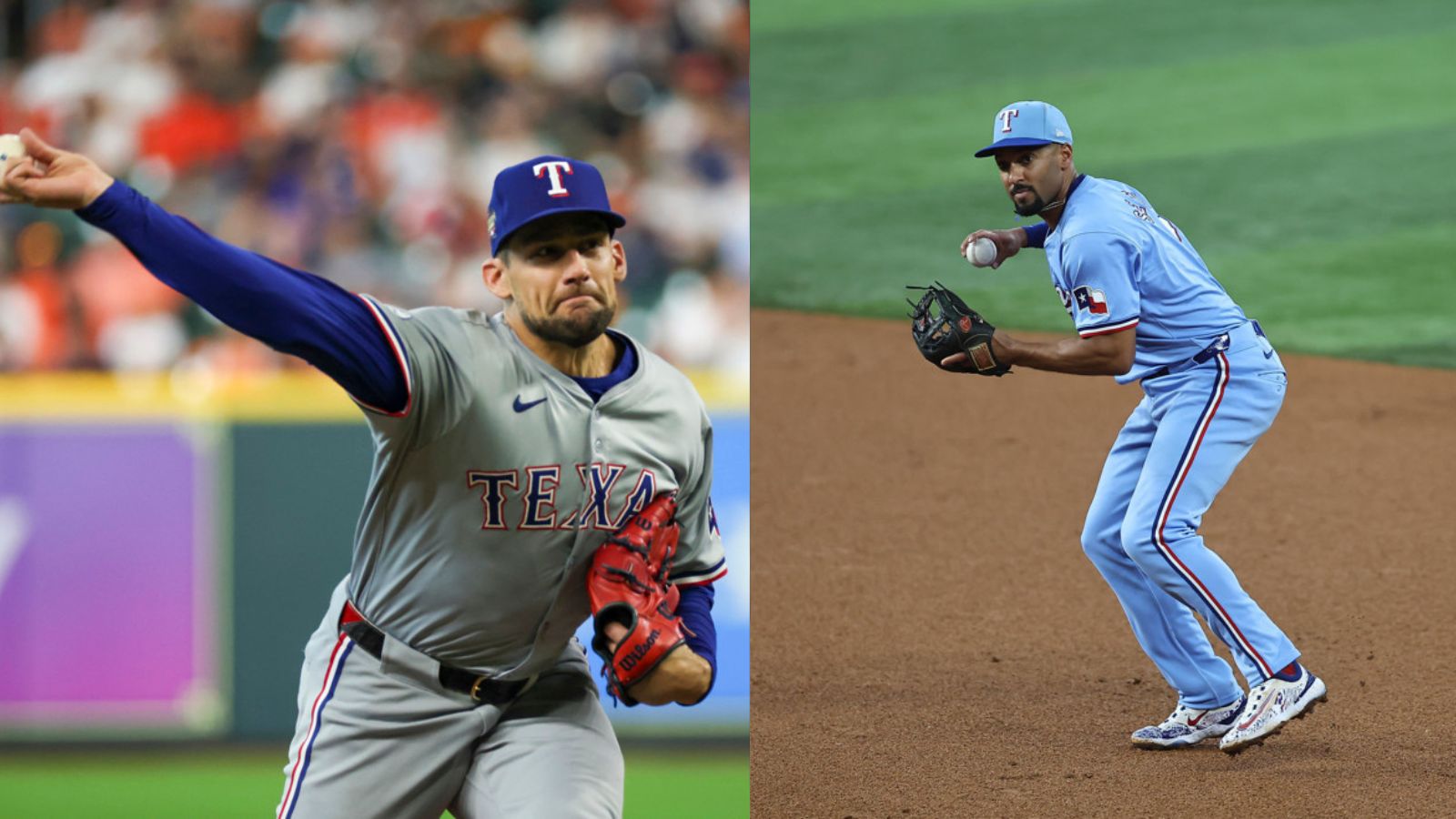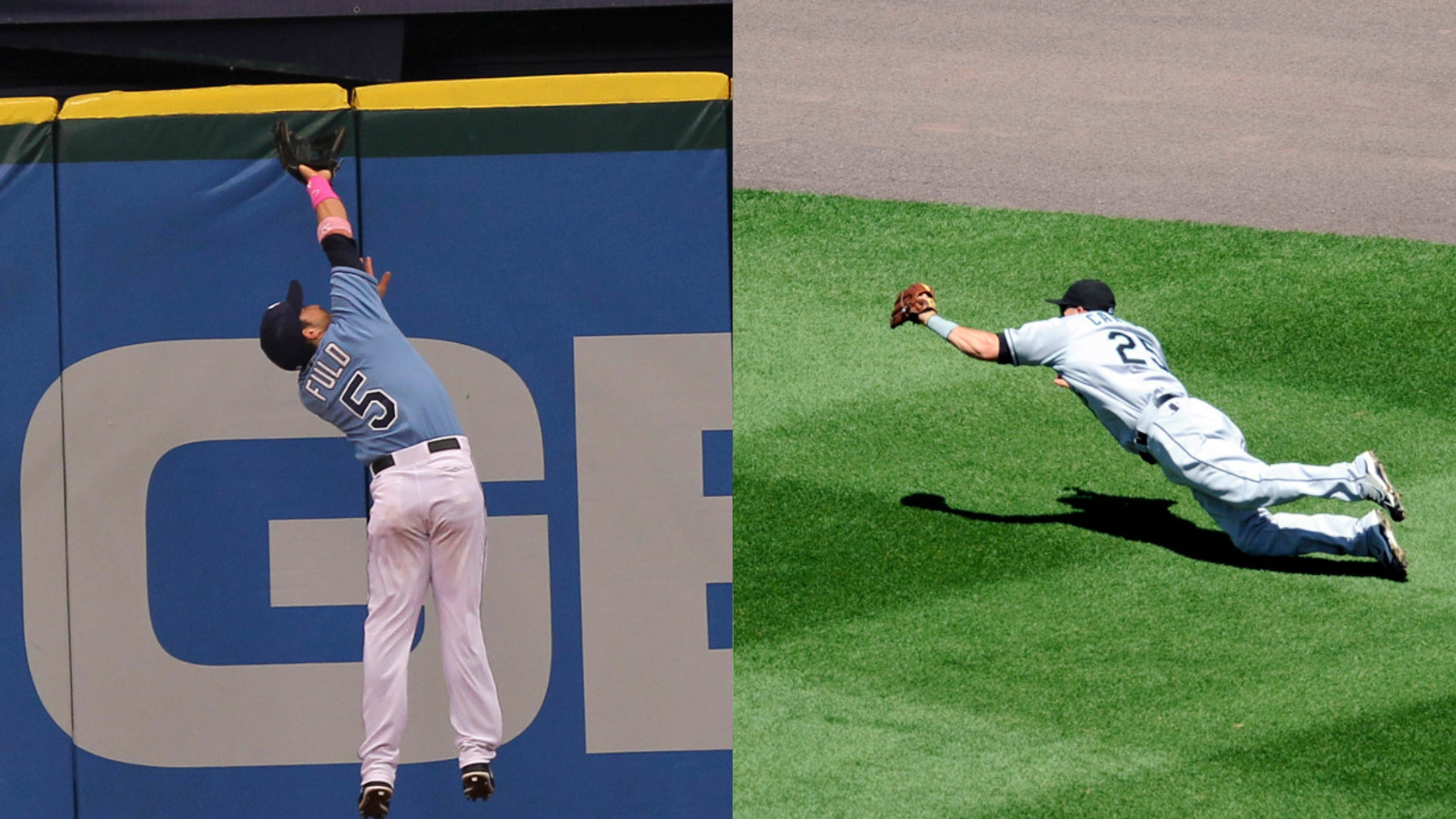The Houston Astros have long valued pitch framing. Over the last five seasons, only one team — the Dodgers — have saved more runs via framing than the Astros. (You can now find this and the rest of our Strike Zone Runs Saved data on FanGraphs, under the rSZ column within the Fielding leaderboards.)
So it was noteworthy when Houston signed Robinson Chirinos to a one-year contract in December. Chirinos has historically rated as a negative pitch framer, including -6 Strike Zone Runs Saved in 2018.
Even more interesting is what part of the strike zone Chirinos has struggled to frame. From Chandler Rome’s profile on Chirinos for the Houston Chronicle last month:
“I told A.J. [Hinch] this (that) last year the pitch I was struggling (with) was the high pitch,” Chirinos said Thursday. “When I signed here in December, I knew from facing all these guys how they like to pitch. That high pitch is a pitch they use a lot.”
Gerrit Cole and Justin Verlander were among the league leaders at throwing fastballs in the upper-third of the zone and above in 2018. Yet it’s an area that Chirinos may not be comfortable with.
So where does Chirinos rank among other backstops at getting high strikes?
Using BIS’s pitch-charting data and standard strike zone, let’s consider called pitches (balls and called strikes) in approximately the top-fifth of the zone, plus a little above it and off the edges — essentially the area bordered in black here:
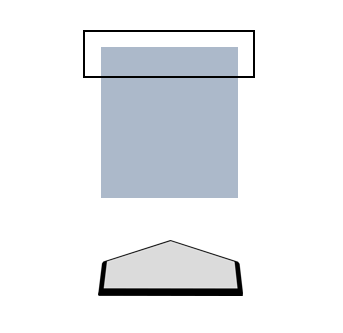
The pitches in this area have a borderline called-strike expectation. Anything higher or further outside is very likely to be a ball; anything lower (in the zone) is very likely to be a strike.
Among the 35 catchers with the most pitches caught in this area in 2018, here were the ten best at getting called strikes:
| Rank | Catcher | Strikes | Pitches | Strike Rate |
| 1 | Yadier Molina | 521 | 1167 | 44.6% |
| 2 | Sandy Leon | 314 | 720 | 43.6% |
| 3 | Wilson Ramos | 383 | 925 | 41.4% |
| 4 | Austin Hedges | 367 | 900 | 40.8% |
| 5 | Luke Maile | 213 | 529 | 40.3% |
| 6 | Chris Iannetta | 312 | 779 | 40.1% |
| 7 | Max Stassi | 228 | 579 | 39.4% |
| 8 | Kevin Plawecki | 249 | 638 | 39.0% |
| 9 | Omar Narvaez | 255 | 660 | 38.6% |
| 10 | Christian Vazquez | 267 | 692 | 38.6% |
And here were the ten worst:
| Rank | Catcher | Strikes | Pitches | Strike Rate |
| 35 | J.T. Realmuto | 246 | 895 | 27.5% |
| 34 | Yan Gomes | 217 | 789 | 27.5% |
| 33 | Manny Pina | 183 | 648 | 28.2% |
| 32 | Tucker Barnhart | 294 | 956 | 30.8% |
| 31 | Jonathan Lucroy | 262 | 848 | 30.9% |
| 30 | Francisco Cervelli | 256 | 821 | 31.2% |
| 29 | Devin Mesoraco | 185 | 588 | 31.5% |
| 28 | Kurt Suzuki | 224 | 699 | 32.0% |
| 27 | Willson Contreras | 304 | 934 | 32.5% |
| 26 | Robinson Chirinos | 269 | 810 | 33.2% |
Chirinos does, in fact, appear among the trailers here. Meanwhile, Houston’s other catcher, Max Stassi, rates near the top. Stassi was tied with Yasmani Grandal and Tyler Flowers for the Strike Zone Runs Saved lead in 2018.
The Red Sox, Cardinals, and Mets all appear to be taking advantage here. Those teams ranked first, second, and third, respectively, in throwing the highest percentage of overall pitches in the area we outlined. (The Astros were eighth.)
And their catchers were strong at getting strikes there. Boston’s Sandy Leon and Christian Vazquez were both among the top ten at getting strikes in that area in 2018. The Cardinals’ Yadier Molina was the very best. And although the Mets traded Kevin Plawecki (8th) to Cleveland, they signed Wilson Ramos (3rd) to play behind the plate. (Pitching up in the zone was a key for Jacob deGrom in his Cy Young season.)
Finally, we can also visualize how catchers differ in framing various parts of the zone. Here’s a look at Chirinos:
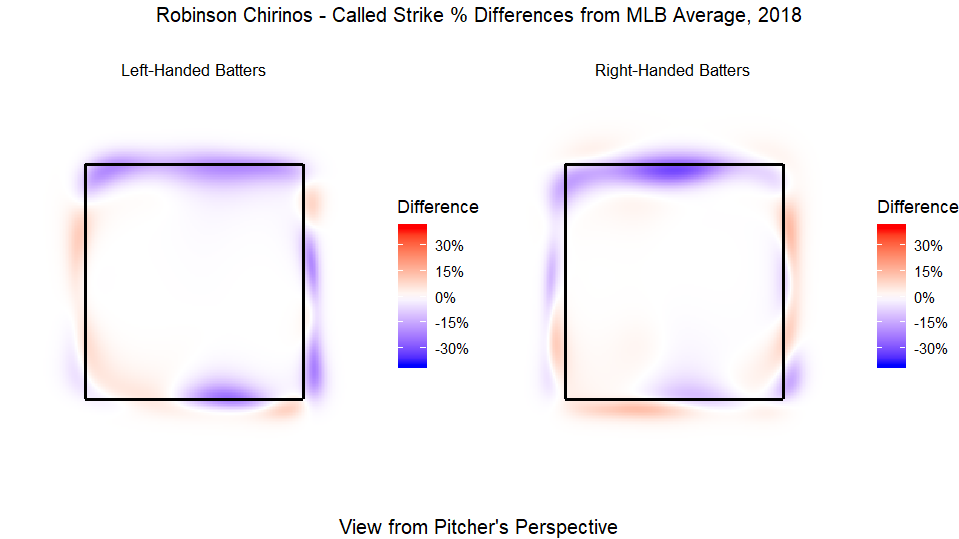
This image compares Chirinos’ ability to get called strikes in each location to the league average. The red areas are where he’s better than average, and the blue areas are where he’s worse than average. As expected, we see a lot of blue at the top of the zone.
And here’s a look at Molina, who ranked first on the above leaderboard and excels at getting high strikes (but not so much at low ones):
